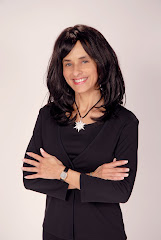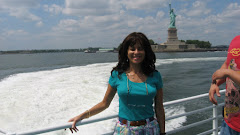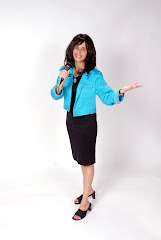What does Arab mean?
a. A nationality
b. A religion
c. A race
d. A geographical area
The answer is none of the above, really.
Arab is a culture. The three unifying features of the Arab world are language (Arabic), religion/law (Islam, Koran in Arabic) and geography (24 countries in Middle East and Africa). The term Arab refers to a culture that originated in Arabia and in the 7th century, expanded to include most of the Middle East and Northern Africa. Most Arabs practice Islam, the worlds 2nd largest and fastest growing religion. Not all Islamic nations are of the Arab world including: Turkey, Pakistan, Iran (Persians), Indonesia, Malaysia (60%) and Afghanistan. Not all Arabs are Muslims. For example, there are sizable numbers of Christians living in Egypt, Iraq, Palestine, Jordan, Syria, Malaysia, Sudan, and Lebanon. Of course, Israel is considered a Non-Arab nation in the Middle East that is largely Jewish with two distinct ethnic heritages: Shephardic (Mediterranean, Middle Eastern), and Ashkenazic (Eastern European).
Arabs make up less than 25% of the worlds Muslims. There are more Muslims in Indonesia, for example, than in all Arab countries combined. Large populations of Muslims also live in India, Iran, other parts of East Asia and sub-Saharan Africa. Islam has a strong Arab flavor, though, as the religion's holiest places are in the Middle East, and the Koran (Quran) was originally written in Arabic.
Finally, not all people from the Middle East are Arabs. The four main language groups in the Middle East are Arabic, Hebrew, Persian and Turkish. Other significant language groups are Kurdish and Berber. Arabs are largest in terms of population.------------------
What about the Arabic language?
Arabic is the native language of 150 million people and the official language of 20 countries. It is one of the languages of the UN and it is tied with Bengali as the 4th most widely spoken language in the world.
Spoken Arabic is different from written Arabic. Written Arabic is Classical Arabic that is used for all writing, formal discussions, speeches, broadcasts, and most importantly The HOLY KORAN. Followers believe the Koran came directly from God so the language is sacred. More than most cultures, speakers of Arabic feel their language is superior to all others. Classical Arabic is prestigious, while Arabic dialects carry little prestige. To learn classical Arabic requires many more years of study than English. It is rich in vocabulary and grammatically complex.
Arabic is written in the 28-character Arabic alphabet. In Arabic, a character may change depending on its placement in the word or sentence. Arabic letters are connected like script. Fine writing is called calligraphy and is held in high regard and appreciated as an art form in the Arabic culture.
The spoken languages are Formal Arabic and Colloquial Arabic, which includes many dialects and subdialects. Some differ so much from one another that many are mutually unintelligible and they cannot be understand by outsiders. Like Chinese, all native users understand the written language while some dialects are not universally understood by other Chinese speakers.
Arab Americans
There are 1.2 million Arabs in the US. 850,000 Americans reported Arab ancestry in the 2000 census. Another 340,000 reported combined Arab and non-Arab ancestry
80% report they are White
46% were born in US
83% are US citizens
75% speak English at home and or very well
41% have bachelors or higher
They are multiracial: white black yellow
They are multiethnic: ie Persian, Indian Egyptian
They are multicultural: religion, language, food, dress, gender roles
The United States has, at different times, classified Arab immigrants as African, Asian, white, European or as belonging to a separate group. Most Arab Americans identify more closely with nationality than with ethnic group.------------------
Ethnicity of Arabs in the US:
Lebanese 29%
Egyptian 15%
Syrian 9%
Palestinian 7%
Jordanian 4%
Moroccan 3.6%
Iraqi 3.5%
Religion of Arabs in the US-The Majority are Christian
Catholic 35%, Muslim24%, Eastern Orthodox 18%, No affiliation 13%, Protestant 10%
The largest ethnic background of US Muslims is African American (47%) followed by South Asians (24%)
The largest Muslim populations worlwide live in 1) Indonesia, 2) Pakistan, and 3) India.-------------
Additional Notes
Before 1960, as many as 90 percent of Arab immigrants were Christians, but recent immigrants are mostly Muslim. There were several prominent sects within the Christian population: Maronite Christians from Lebanon, Coptic Christians from Egypt and Chaldeans from Iraq.The new immigrants settled in or near established Arab-American communities. The Detroit metropolitan region, especially Dearborn, attracted a steady stream of Arab immigrants after 1965 and may have the largest number of recent Arab immigrants. Most came from a variety of occupational backgrounds and found work in the auto industry or in other working-class employment, although not all Detroit Arabs sought such employment.---------------
Christian Chaldeans, an Iraqi minority in a Muslim country, were among the first to take advantage of the 1965 Immigration Act. About one thousand lived in Detroit before passage of the act. After 1965 their numbers increased, until by 1974 they accounted for approximately one-seventh of Detroit's estimated 70,000 Arab-Americans. They opened grocery stores and established a reputation in that business similar to that of Korean grocers. By 1972 the Chaldeans were running about 278 stores in Detroit, and assisting others in the United States. Another large Arab-American settlement in Brooklyn had attracted earlier Lebanese and Syrian migrations. Los Angeles lured many Coptic Christians from Egypt, part of the Egyptian immigrant wave after the 1967 Arab-Israeli War.--------------
Some well-known Arab Americans are: Danny Thomas, Paula Abduul, Omar Sharif, Tony Shaluub, Paul Anka, Christa McAuliffe, the teacher/astronaut who died aboard the space shuttle Challenger; Indy 500 winner Bobby Rahal; Heisman Trophy winner and NFL quarterback Doug Flutie; creators of radio's American Top 40 Casey Kasem and Don Bustany; Mothers Against Drunk Driving founder Candy Lightner; Jacques Nasser, president and chief executive officer of Ford Motor Co., and Helen Thomas, former dean of the White House press corps.
Tuesday, November 11, 2008
Subscribe to:
Post Comments (Atom)






.jpg)
.jpg)




1 comment:
[ Smiles ] Thanks to you, people would have a better idea of what Arab means.
Post a Comment